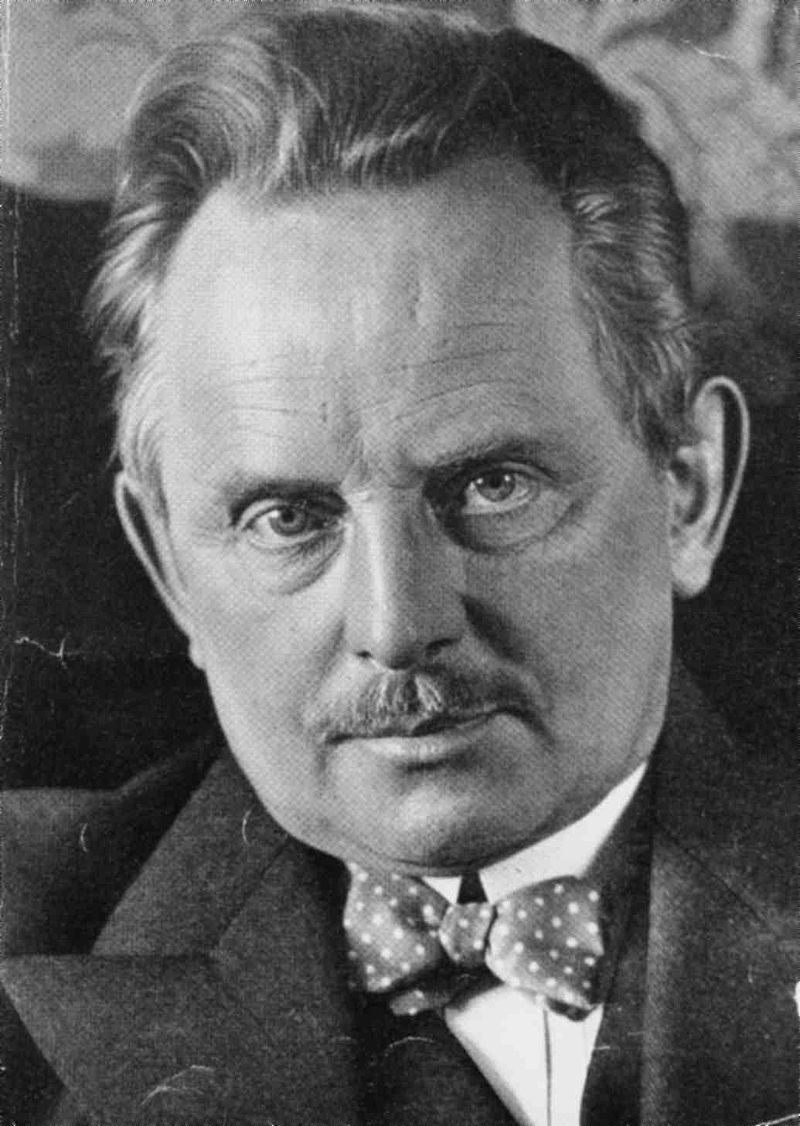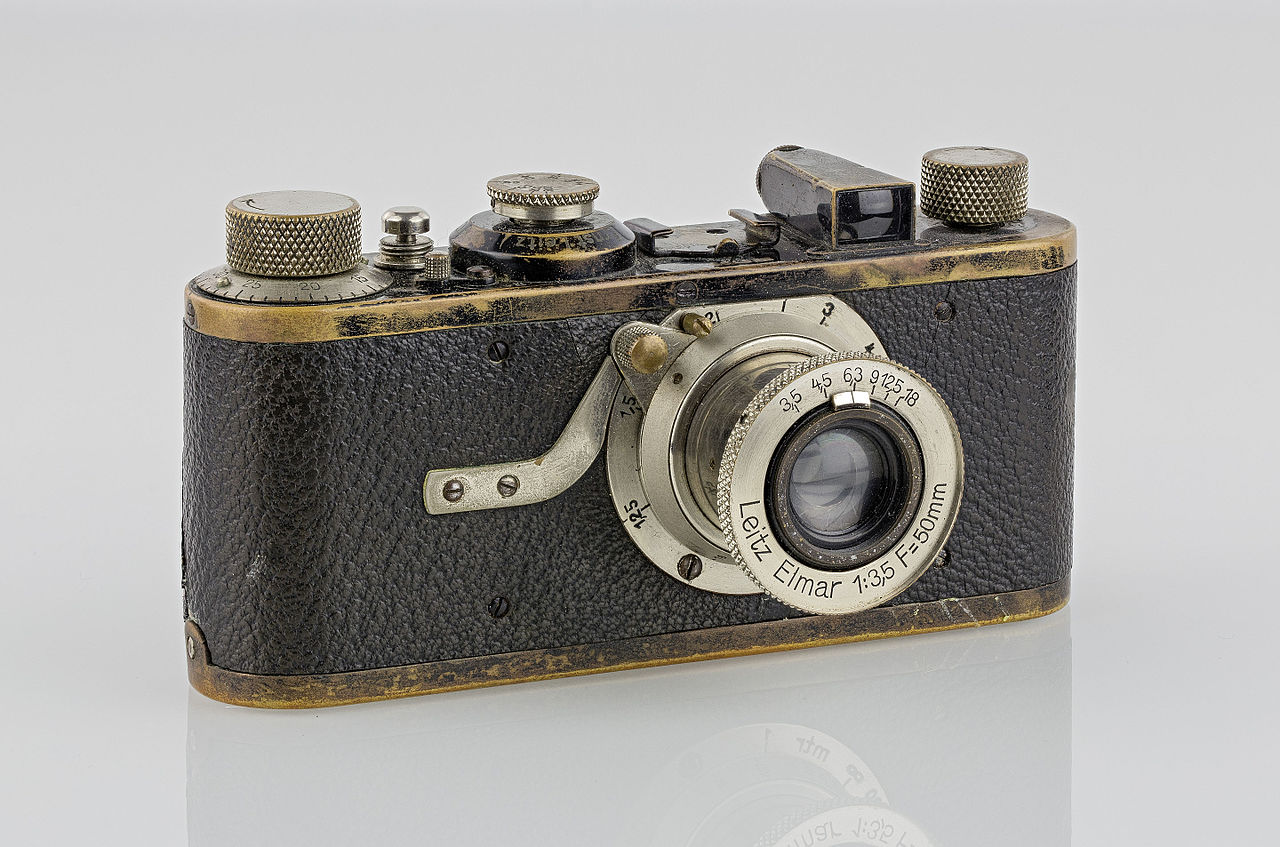Canon 50mm's
The lowdown on the Nifty Fifty
It seems that the “Nifty Fifty” has been around for ever. For guys like me who have been shooting digital and, before that, film cameras, especially back in the range finder era, it is even more so. The 50mm prime lens was the “kit lens” on almost every 35mm camera regardless of maker. But how did that come about? Well, for that answer, we have to go back, way back, to the beginning of the 35mm era.

Oskar Barnack (1897 – 1936) the inventor of the 35mm camera. (Image courtesy of Wikipedia)
Cameras were originally big and bulky. They could be simple in construction, made of wood and leather, and be inexpensive. But they were heavy and awkward to use.
In the early 1900’s Oskar Barnack was an employee of Ernst Leitz in Wetzlar, Germany. He was interested in creating a small, light, compact camera that anyone could carry and use. He set to work and subsequently became the impetus behind the Leitz effort to create a 35mm camera and, indeed, the 35mm film format.
It was Barnack who conceived of using a strip of film 35mm wide such as used in motion pictures. But unlike movie cameras which placed their images across the film, he decided a larger image was needed which he obtained by rotating the image so it fit lengthwise on the film. The actual image area was to be 24×36 mm (2:3 aspect ratio) with the sprocket holes down both sides.
Leitz was hesitant to commit to the venture but they finally agreed to an initial production of 1000 cameras and in 1925 they brought out the first 35mm camera. This was the Leitz Camera, which name was shortened to Leica. It was the Leica I.

A Leica I from 1927. Look at the lens. It’s a Nifty Fifty: a Leitz Elmar 50mm f/3.5 (Image courtesy Wikipedia)
The very first 35mm camera came with a 50mm “kit lens”. What lens came with Canon cameras in the 1930’s and 40’s? A Nikkor 50mm f/3.5 of course. The Contax I had a Carl Zeiss 50mm f/3.5. They all did; 50 or 55mm was the standard. My Minolta SR1 in the 60’s came with a 55mm Auto Rokkor; my Leica M3 had a 50mm f/2.0 Summicron. So what was going on here; why 50mm?
Well, there are a couple of reasons. Firstly, a long lens is easy to make but you just don’t get enough scene in the picture. You cannot get back far enough. However, wide lenses make things look too far away. And of course, the wider the lens the more curvature is required in the glass; angles of incidence become quite large on the edges of the lens so they become harder to make. 50mm is a compromise and time has shown that it works out pretty well.
There is another reason: internal lens design. This combination of focal length and image size allows for a simple lens design that can yield a large aperture with an acceptably flat field of sharp focus with little or no light fall off in the corners of the 24 x 36mm image area. Canon has made great use of a classic double Gaussian design in lens after lens, as we shall see. It is a simple 6 elements with two pairs of elements glued together. This gives 4 groups of 6 elements (some groups are actually single lens elements).
Many of the great “R”, “F”, “A” and “T” series cameras came with a standard 50mm lens, usually with an aperture of f/1.8. It was for years the standard that most companies adhered to. Today these lenses are plentiful and inexpensive to acquire. Because they were popular they have endured through many iterations. Once lens technology enabled the manufacture of acceptably sharp reasonably priced zoom lenses these slowly pushed the 50mm out of the “kit lens” category but their popularity has survived.
Because of their simplicity and the benefits of optimizing for one focal length only, these lenses tend to be sharper and have better contrast than modern zoom lenses. They are also smaller, lighter and generally cheaper than a zoom lens making them easier to acquire, carry and use.
Getting back to Canon, I have prepared the following chart that lists the 50 thru 55mm lenses Canon has introduced since the introduction of the SLR in the 1960’s. The information included is far from exhaustive and as I acquire these lenses I shall write a more complete description of them. These are the Nifty Fifties:
| Name | Released | Mount | Blades | Groups | Elements | Filter | Weight |
| R 50mm f/1.8 (I) | May 1959 | R | – | 4 | 6 | 58mm | 295gr |
| R 50mm f/1.8 (II) | Aug 1960 | R | – | 4 | 6 | 58mm | 305gr |
| R 50mm f/1.8 (III) | Apr 1963 | R | – | 4 | 6 | 58mm | 305gr |
| FL 50mm f/1.8 I | Mar 1964 | FL | 6 | 4 | 6 | 48mm | 228gr |
| FL 50mm f/1.4 | Apr 1965 | FL | 8 | 4 | 6 | 58mm | 280gr |
| FLM 50mm f/3.5 | Jun 1965 | FL | 6 | 3 | 4 | 58mm | 295gr |
| FL 50mm f/1.4 I | Sep 1966 | FL | 8 | 5 | 6 | 58mm | – |
| FL 50mm f/1.8 II | Mar 1968 | FL | 6 | 4 | 4 | 48mm | 280gr |
| FL 50mm f1.4 II | May 1968 | FL | 8 | 6 | 7 | 58mm | 340gr |
| FL 55mm f/1.2 | Jul 1968 | FL | 8 | 5 | 7 | 58mm | 480gr |
| FD 50mm f/1.4 | Mar 1971 | FD | 8 | 6 | 7 | 55mm | 370gr |
| FD 50mm f/1.8 (I) | Mar 1971 | FD | 6 | 4 | 6 | 55mm | 305gr |
| FD 55mm f/1.2 AL | Mar 1971 | FD | 8 | 6 | 8 | 58mm | 605gr |
| FD 55mm f/1.2 | Mar 1971 | FD | 8 | 6 | 8 | 58mm | 565gr |
| FD 50mm f/1.8 (II) | Nov 1971 | FD | 6 | 4 | 6 | 55mm | 305gr |
| FDM 50mm f/3.5 S.S.C. | Mar 1973 | FD | 6 | 4 | 6 | 55mm | 310gr |
| FD 50mm f/1.8 S.C. (I) | Mar 1973 | FD | 6 | 4 | 6 | 55mm | 255gr |
| FD 55mm f/1.2 S.S.C. AL | Mar 1973 | FD | 8 | 6 | 8 | 58mm | 575gr |
| FD 55mm f/1.2 S.S.C. | Mar 1973 | FD | 8 | 5 | 7 | 58mm | ? |
| FD 50mm f/1.4 S.S.C. (I) | Mar 1973 | FD | 8 | 6 | 7 | 55mm | 350gr |
| FD 55mm f/1.2 S.S.C. Aspherical | Mar 1975 | FD | 8 | 6 | 8 | 58mm | 575gr |
| FD 50mm f/1.8 S.C. (II) | Mar 1976 | FD | 5 | 4 | 6 | 55mm | 200gr |
| New FD 50mm f/1.8 | Jun 1979 | FDn | 5 | 4 | 6 | 52mm | 170gr |
| New FD 50mm f/1.4 | Jun 1979 | FDn | 8 | 6 | 7 | 52mm | 235gr |
| New FD 50mm f/1.2 L | Oct 1980 | FDn | 8 | 6 | 8 | 52mm | 380gr |
| New FD 50mm f/1.2 | Dec 1980 | FDn | 8 | 6 | 7 | 52mm | 315gr |
| EF 50mm f/1.8 | Mar 1987 | EF | 5 | 5 | 6 | 52mm | 190gr |
| EF 50mm f/1.0 L USM | Sep 1989 | EF | 8 | 9 | 11 | 72mm | 985gr |
| EF 50mm f/1.8 II | Dec 1990 | EF | 5 | 5 | 6 | 52mm | 130gr |
| EF 50mm f/1.4 USM | Jun 1993 | EF | 8 | 6 | 7 | 58mm | 290gr |
| EF 50mm f/1.2 L USM | Jan 2007 | EF | 8 | 6 | 8 | 72mm | 590gr |
| EF 50mm f/1.8 STM | May 2015 | EF | 7 | 5 | 6 | 49mm | 160gr |
